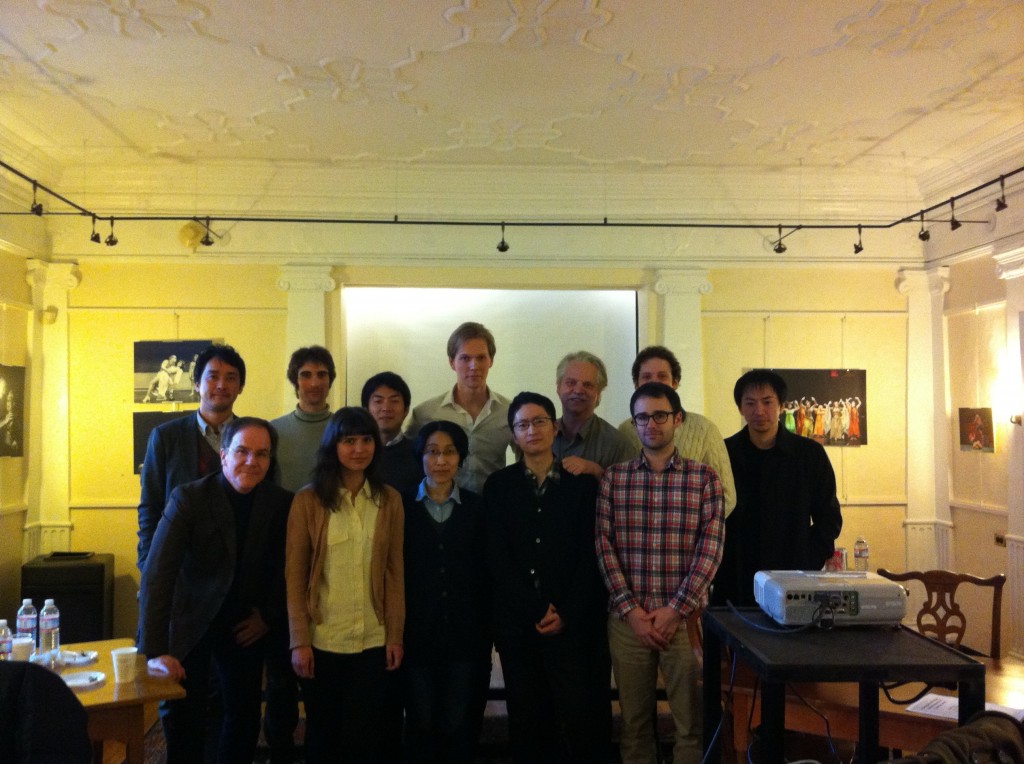In an earlier posting (Back in Japan: A Conference on Acting––with Jet Lag), I mentioned that three graduate students from Waseda University (Tokyo, Japan) would be coming to Yale to present their scholarship. The story in brief: They would attend the Society for Cinema and Media Studies conference in Boston (March 21-25, 2012), but their university expected them to return home immediately–with no time to go sightseeing or do research. And no time to get over their desynchronosis (otherwise known as jet lag). It was subsequently so arranged that they gave presentations at Yale a few days after SCMS (on March 28th) buying them some extra time in the US. Since DAIBO Masaki and Johan Nordstrom were reprising their SCMS papers, they headed to New York and did research at Columbia University’s library which has a very strong archive of Japanese film material. NIITA Chie, who had been a pre-doc at Yale for a year, spent her time preparing a presentation on her recently defended dissertation. Moreover, the resulting symposium provided an opportunity for Yale Film Studies graduate students to meet their Waseda counterparts––and obviously vice versa.
Here is the announcement for their presentations, which had a shared concern with the relation of radio and recorded sound to motion pictures:
I just want to report, in case their advisor KOMATSU Hiroshi reads this posting, that they did a terrific job. It was a particular pleasure to hear Chie present an overview of her dissertation before focusing on a particular chapter dealing with Lux Radio Theater, which offered radio adaptations of motion picture dramas from the mid-1930s into the mid-1950s. Dr. Niita is quite independent and research is lonely work, so I was unsure how successful her previous year at Yale as a pre-doctoral fellow had been. Clearly it was highly productive, and I felt very honored to have served as her sponsor. The relationship between radio and motion pictures has been a seriously under-examined aspect of American cultural history: Chie’s strong dissertation should be translated into English and published.
Nordstrom’s exploration of the way records and songs were incorporated into silent Japanese cinema was a fascinating surprise, at least to this non-expert. His presence also reminded Yale students that Waseda has a graduate population that is as international as our own. Daibo’s work on the long history of syncrhonous recorded sound in Japan took an original turn as he explored the ways in which successive waves of sound technology went through a process of Japanification.
The symposium was embedded within a reception––coffee before the presentations, wine afterwards (well that was the idea, anyway).

Someone at the symposium declared that Waseda has the foremost scholar of Japanese Silent Cinema in Japan (Hiroshi KOMATSU) while Yale has the foremost scholar of Japanese Silent Cinema outside Japan (Aaron Gerow). Admittedly, this comparison would seem to call for a final round of some reality TV show along the lines of American Idol (tentatively names Academic Idoltry), but this meeting of their students simply ended in a friendly group portrait:
Photos by Mal Ahern (standing next to Chie) and Josh Glick –(almost hidden behind Sam Good). Incidentally Sam provided Masaki with hospitality for a couple of nights. So thanks go to Mal, Josh, Sam and above all to our administrative general Katherine Germano, who organized the whole event.






